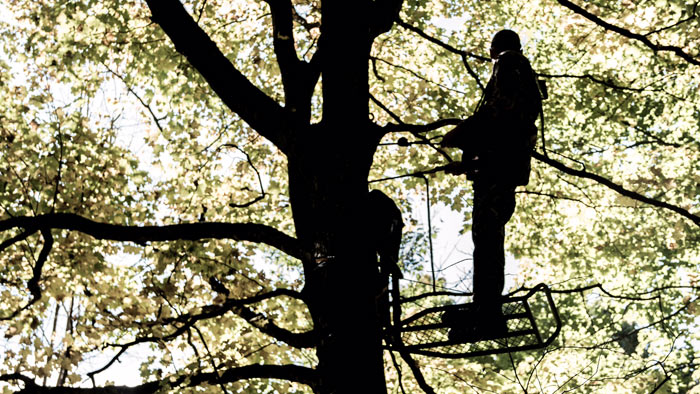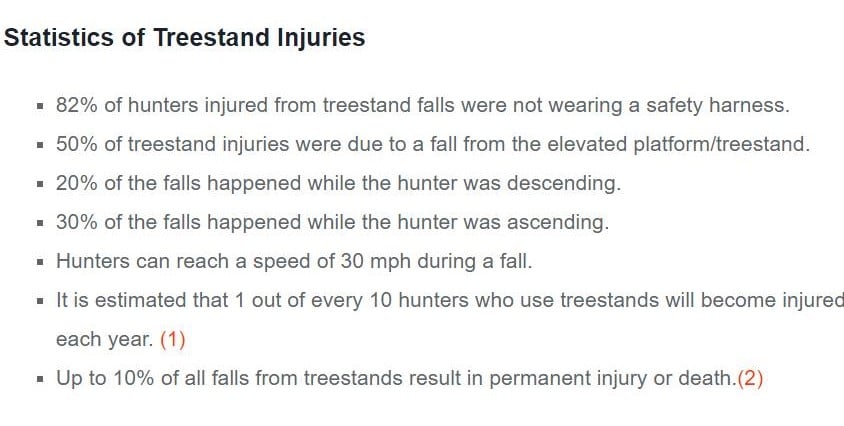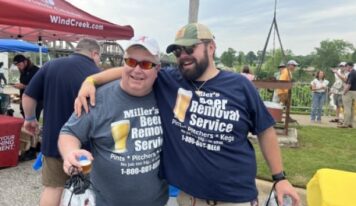Editor’s Note: The people involved in saving this Hunter Saturday will say they are not heroes. We beg to differ. Call it a Thanksgiving miracle.
BY SARAH STEPHENS
ELMORE/AUTAUGA NEWS
An area man has a lot to be thankful for this week, after falling 15-feet from a tree stand, breaking his femur.
The victim was part of a large hunting group in the Autaugaville area at a camp when the incident occurred, according to Ricky Roberts, Assistant Fire Chief for Prattville Fire Department.
Roberts happened to be hunting at the same camp, and was one of several people who helped get the injured man to a waiting Haynes LifeFlight helicopter.
Others involved in this rescue were Phillip Burdett (Medic), Matt Stringfellow, Mike Lamar, and Tyler Massey.
Saturday was opening day of Gun Season, and Roberts told the EAN the large group was excited to begin the hunt.
“Everyone went out full of anticipation. Normally everyone comes back to camp around 9:30 a.m. We had one guy that we hadn’t heard from, and we were sitting around the campfire, saying that was unusual,” Roberts said.
About that time the missing friend called one of the men’s cell phone, but the connection would not go through.
“Then he tried to call me, but I couldn’t hear him. I walked out in front of the camp and finally got a signal,” Roberts said. “He told me he had fallen out of a tree and felt like he had really screwed up his leg. Luckily, I knew about where he was. We have a sign in/out board at the camp. Knowing that area, I knew there was no way we could get an ambulance back to him.”

The five rescuers immediately went into action. Calls were made to 911, while others made a plan to make their way to their friend and get him to safety.
“I knew he had probably fallen 12-15 feet, and by the tone of his voice, I knew it was a pretty significant injury,” Roberts said. “Before we left we had called 911, but I told them to go ahead and get a helicopter our way. There is a large hayfield that was good for a landing zone, so all of that was set up before we left.”
The group drove two side by sides, or Mules, as close to the area as possible.
“He had fallen about 15 feet, and thank goodness we had another paramedic (Burdett) with us that hunts there. It didn’t take us a minute to assess there was a femur fracture. That can be really dangerous, because there is a main artery and nerves in that general area. We were about a mile to where a truck could have reached us.”
This is where Roberts’ experience came in handy. Aside from being a Prattville Firefighter, Roberts also teaches a Wilderness Rescue Class for the Alabama Fire College. In that training, he teaches not only how to find people who are lost, but treating them in unusual circumstances.
In the past year, he was involved in locating two missing people, one a four-year-old and an 88-year-old dementia patient.
As for his instructing the Wilderness Rescue Class, one of the sections he covers if Wilderness First Aid/Medicine.
“We teach our students that if you find a victim, you have to be ready to improvise. You aren’t going to have modern things you would find in the back of an ambulance,” he said.
So, Roberts and the crew improvised.
They constructed a splint for the victim’s leg out of sticks and boot laces.
“We didn’t want that leg to move. We took our hunting coveralls and jackets and padded the Mule. We picked him up and set him in there as gently as possible,” Roberts said.
Roberts was able to call the injured hunter’s son, and also communicate with 911, letting emergency officials know exactly what the injury entailed. People still back at camp met an ambulance along CR 9 and led them down a “pig trail” to the hayfield.
Meanwhile, the rescue crew was moving slowly, because the way was very rough, and every bit of movement, or a bump, was excruciating to the injured hunter.
As this was going on, another group guided the helicopter toward the hayfield, and they donned their bright orange to make them easier to spot.
When LifeFlight landed, a ground ambulance was also on scene.
“We agreed flying him would be the better option, with a long bone injury. We handed him over to the crew and they flew off,” Roberts said.
Due to COVID, Roberts and friends knew they could not be with their buddy at the hospital, but they received regular updates from a family member. Their friend was taken to Baptist South and had surgery to repair the break Saturday night. He is expected to make a full recovery.
“He is a very close friend to all of us,” Roberts said.
We asked Roberts about what tips he would offer to hunters, particularly those using treestands.
“There are several things, really. First, always let someone know the area where you will be hunting. Tell someone in the hunting party, or use a sign in board. Let your spouse know the area, and the anticipated time of return. This situation was unusual, because we quickly knew he was overdue.”
Roberts said at the beginning of every season, a treestand needs to be inspected for any type of wear. Make sure all of the straps are in good condition and replace them if needed. Even if using a ladder stand, Roberts said to use a safety harness.
“We have come so far with new technology, that the harnesses are really not uncomfortable. No one wants to hang in a tree, but it is better than hitting the ground,” Roberts said.
Roberts said he didn’t do anything heroic, and that it was just very fortunate how everything worked out. He is grateful for the crew that all worked together to get their friend to safety and quick treatment.
“I am thankful for everyone involved, from the guys, to the dispatcher, the medics, the ambulance crew, the helicopter crew and the doctors at the hospital,” Roberts said. “We didn’t do anything that anyone else wouldn’t have done. But the Good Lord blessed me to be a part of that class, and I attained the skills to be able to improvise in that situation.”
We are very glad to share this story, and despite what they may feel, those who helped Saturday are true heroes. We pray that the injured hunter continues to heal without any issues.
Shootingtime.com offers these safety tips that are good to know and follow.
The Basics of Hunter Safety
Understand how your firearm works.
Keep your firearm pointed in a safe direction.
Keep your gun’s safety on when not shooting.
Unload your gun when crossing obstacles or hoisting it to treestands.
Never swing your gun outside the safe zone of fire.
Wear fall protection while hunting from an elevated platform.
Be sure of your target before shooting your firearm.
Be sure of what is behind your target
Respect the water.
Be prepared for the weather you may encounter.
Don’t get lost.
Treestand Safety
Hunting from a treestand gives you the advantage over big game animals like deer because you’re out of their main line of sight and your scent dissipates easier from an elevated platform. The downside to treestand hunting is the potential for injury or death due to falling. It doesn’t matter what state you are in, falls from treestands almost always account for over 50% of all hunting accidents every year.
Statistics of Treestand Injuries
82% of hunters injured from treestand falls were not wearing a safety harness.
50% of treestand injuries were due to a fall from the elevated platform/treestand.
20% of the falls happened while the hunter was descending.
30% of the falls happened while the hunter was ascending.
Hunters can reach a speed of 30 mph during a fall.
It is estimated that 1 out of every 10 hunters who use treestands will become injured each year. (1)
Up to 10% of all falls from treestands result in permanent injury or death.
How to Safely Access and Hunt from a Treestand
To safely access and hunt from a treestand, follow the steps below:
Purchase and wear a hunting safety harness. Make sure you have a proper fit. The harness should be snug; not too tight or loose.
Purchase and install a lifeline on every treestand/tree that you plan on hunting. For ladder, hang on, and permanent treestands, you should tie the lifeline to the tree above your stand and at the base of the tree or ladder. For the lifeline to be effective, it has to be accessible while climbing and be taut enough for working the prusik knot up and down the lifeline.
When you reach your platform, stay tied off to the lifeline.
When your season is over, carefully remove your lifeline and store it until next season. Leaving the lifeline installed year-round will expose it to unnecessary damage from weather and other factors.






